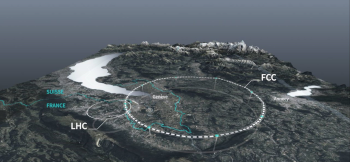
Optics developments with CFMs show promising results to improve the FCC-ee performance and efficiency.
The FCC-ee project envisions a double-ring lepton collider in a new tunnel with a circumference of 91 km that will achieve the necessary conditions for the discovery of new physical phenomena beyond the frontier established by the standard model. An ongoing feasibility study, coordinated by CERN and supported through the H2020 FCCIS project, explores different concepts for the sustainable and efficient construction and operation of this machine. The FCC-ee will be implemented in stages as an electroweak, flavour, Higgs, and top factory by spanning the energy range from the Z pole and the WW threshold through the maximum Higgs production rate, up to the top threshold and beyond.
The biggest motivation for using Combined Function Magnets (CFM) in an optics design for the FCC-ee is the decrease of the synchrotron radiation power in the beams of FCC-ee. Consequently, this would result in energy savings during the FCC-ee runs. It should be noted that synchrotron radiation power scales as the energy to the fourth power and is inversely proportional to the bending radius of the accelerator.
In summary, optics developments with CFMs in the arc quadrupole locations are showing promising results to improve the FCC-ee performance and efficiency.
Image from CERN: A schematic map showing a possible location for the Future Circular Collider
